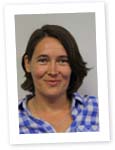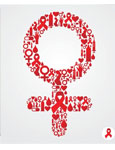Welcome
Dear Reader,
 One of the main activities SHM carries out is the collection and maintenance of anonymous data from HIV-infected patients and their antiretroviral treatment. This data is then available to treating physicians and their teams at the 26 HIV treatment centres throughout the Netherlands. Over the last couple of years, SHM has been busy developing and updating the way this information is presented. One of the main activities SHM carries out is the collection and maintenance of anonymous data from HIV-infected patients and their antiretroviral treatment. This data is then available to treating physicians and their teams at the 26 HIV treatment centres throughout the Netherlands. Over the last couple of years, SHM has been busy developing and updating the way this information is presented.
In this eNewsletter we will look at our two recently developed online reports and we interview the two project leaders responsible for developing these reports, Bianca Slieker and Mariska Hillebregt. Furthermore, we will review a special event that took place in June, ‘De mens achter de cijfers’ (translation: ‘The person behind the numbers’). From this event we were made aware of the need by women with HIV for more information related specifically to their group. A short article about women with HIV-1 is also included in this edition.
Finally, I hope you find the newsletter interesting reading. Please feel free to contact us with any feedback or suggestions you may have for future editions.
Kind regards,
Frank de Wolf
Director, Stichting HIV Monitoring

SHM introduces 2 new online reports for HIV treatment centre teams

In consultation with HIV treatment centre clinicians and staff, SHM has developed two online reports that are accessible to all HIV treatment centres: Patient Reports and the Centre Specific Report. Through a variety of graphs and tables clinicians and researchers will be able to gain better insight into their own HIV population. Read more

Easy access to patient data through Patient Reports
 Bianca Slieker is a data monitor at SHM. During the past year she has worked hard on developing and implementing the new Patient Reports, which replace the original hospital specific data sets known as ‘site sets’. In the following interview she explains the Patient Reports in further detail. Read more Bianca Slieker is a data monitor at SHM. During the past year she has worked hard on developing and implementing the new Patient Reports, which replace the original hospital specific data sets known as ‘site sets’. In the following interview she explains the Patient Reports in further detail. Read more

Centre Specific Report - Bringing patient population trends into focus
 The Centre Specific Reports are new to HIV treatment centre teams. Mariska Hillebregt, data monitor at SHM, has been involved in developing this entirely new product since the end of 2009. She met with the editors of SHM’s Newsletter to explain the in’s and out’s of the report. Read more The Centre Specific Reports are new to HIV treatment centre teams. Mariska Hillebregt, data monitor at SHM, has been involved in developing this entirely new product since the end of 2009. She met with the editors of SHM’s Newsletter to explain the in’s and out’s of the report. Read more

`De Mens Achter de Cijfers´ – Speed-dating at the Rode Hoed
What does SHM do exactly? What happens with personal data? What research is carried out, is it relevant and what is the result? People with HIV and researchers met during ‘De mens achter de cijfers’ (translation: the person behind the numbers) on Saturday, 9 June 2012 at the Rode Hoed in Amsterdam to discuss these and a range of other topics. Organised by SHM, the HIV Vereniging and Poz and Proud, the event promoted face-to-face discussions through the speed-dating session. Read more

Women with HIV-1
 During the “Mens Achter de Cijfers” event on 9 June 2012, women with HIV spoke with SHM researchers about the need for more data related to their demographic group. As a result of these discussions, SHM is looking further into analysing the data of HIV-infected women. According to the Monitoring Report 2011, around a fifth of patients with HIV in the Netherlands and Curacao are women. In this edition of the SHM newsletter, Rebecca Holman and Colette Smit, both researchers at SHM, describe these women and plans for presenting their data in future publications. Read more During the “Mens Achter de Cijfers” event on 9 June 2012, women with HIV spoke with SHM researchers about the need for more data related to their demographic group. As a result of these discussions, SHM is looking further into analysing the data of HIV-infected women. According to the Monitoring Report 2011, around a fifth of patients with HIV in the Netherlands and Curacao are women. In this edition of the SHM newsletter, Rebecca Holman and Colette Smit, both researchers at SHM, describe these women and plans for presenting their data in future publications. Read more

Event Review
HIV in Europe
The third HIV in Europe conference took place from 18 to 20 March in Copenhagen. One of the objectives of HIV in Europe is to ensure that HIV-infected people in Europe enter care earlier than is currently the case. Earlier testing is therefore a necessity. Late testing is a problem particularly in countries such as Russia and the Ukraine, which has partially resulted in an explosive increase in HIV infections. Of importance is knowing how many HIV-infected people are still undiagnosed. Together with groups such as the ECDC, SHM is working on methods to determine the size of this undiagnosed group.
View the presentation delivered by Ard van Sighem, SHM senior researcher.
Treatment as Prevention (TasP)
In late April in Vancouver, the 2nd International Workshop on HIV Treatment as Prevention (TasP) took place. Researchers and representatives of industry and interest groups came together to discuss the impact of combination therapy on the transmission of HIV. It is thought that through therapy, the risk of HIV transmission is virtually nil. Whether this is the case in practice needs to be demonstrated by PopART, a large-scale trial with 60,000 people in southern Africa. One thing the trial compares is the initiation of therapy immediately upon diagnosis with initiation of therapy according to national guidelines. For gay men in the Netherlands there appears to be little difference between these two strategies.
View the presentation delivered by Ard van Sighem, SHM senior researcher.
8th HIV Monitoring Update, Curacao
The 8th HIV Monitoring Update took place in Curacao on 2 and 3 May. Frank de Wolf attended and gave a presentation on ‘HIV treatment and resistance in Curacao’. During the presentation he outlined that there are a significant number of late diagnoses, resulting in late entry into care and late start of treatment. He further discussed that these are areas that need improvement as they have a marked effect on the epidemic and the care of patients. View the presentation.
State of the cART
The State of the cART symposium was held in Amsterdam on 5 June. During the event, Frank de Wolf presented ‘Does (early) cART have a public health benefit?’. In his presentation he outlined that the contribution to new infections by patients on suppressive treatment is probably limited. However, the risk of transmission may be larger with other STI co-infections or when the perceived protection leads to increased risk behaviour. He concluded by saying that PrEP in MSM may have a substantial impact on reducing the annual number of new infections. View the presentation.

Publication Review
All-cause mortality in treated HIV-infected adults with CD4 ≥ 500/mm3 compared with the general population: evidence from a large European observational cohort collaboration.
The one year mortality probability of 80,642 HIV-infected people in the COHERE study was compared to that of people without HIV. The probability was the same in HIV-infected patients with more than 500 CD4-cells/mm3 for a long period of time. The risk of death remained elevated in injecting drug users. Read the abstract
Impact of antiretroviral therapy on tuberculosis incidence among HIV-positive patients in high-income countries.
Recovery of the immune system through combination therapy can lead to a severe immune response in patients infected with M. tuberculosis, the bacterium that causes tuberculosis. This occurs principally within the first three months of initiation of therapy and especially in the elderly and in HIV-patients with < 50 CD4-cells/mm3. Read the abstract
No treatment versus 24 or 60 weeks of antiretroviral treatment consistently primary HIV infection: the Primo-SHM randomized trial.
CD4-cell counts decrease more rapidly with higher viral load at setpoint. Temporary treatment with combination therapy during the primary infection markedly reduces the setpoint viral load. The overall result is that patients can ultimately shorten therapy use by a few years. Read the abstract

Facts and figures
In 2011, 1372 people were newly registered with HIV in SHM’s HIV monitoring and registration database and of these, 811 were diagnosed with HIV during 2011. The number of new HIV infections in 2011 is unknown. (Source: SHM Annual Report 2011)
© Stichting HIV Monitoring 2012 |
